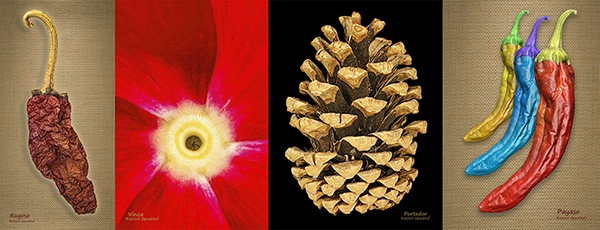Still Life
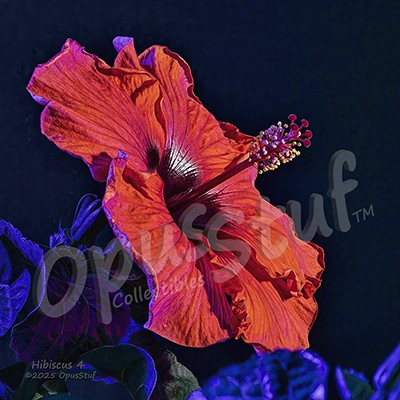
Hibiscus 4
Dramatic but short-lived blooming is the character of Hibiscus plants. The buds take several days to grow into tightly wrapped forms. Then the bud opens as the day warms up into a flat background for the intricate stamen that extends outward. This dramatic bloom usually lasts only a single day, closing up as the temperature drops in the evening. Occasionally a bloom with last through the night and remain open for the following sunrise and into the day.

Payaso
Chile peppers in the southwest USA come in a variety of sizes and flavors, commonly turning from green in their youth to various shades of red and yellow when they ripen. Blue is very unusual, as demonstrated by this Payaso (Spanish for clown). It's a Big Jim variety of chile with a dose of character you might want to call a "Bloochie" while you keep a straight face.

Rugoso
Rugoso is Spanish for wrinkled or rough. Can a wrinkled jalapeno add flavor to a wall? Probably, in a kitchen or dining nook. A dried up chile pepper like this is normally ground up into a powder to make a seasoning. This particular specimen asked if he could become an ornament instead of a seasoning, so we made him into a model decoration.
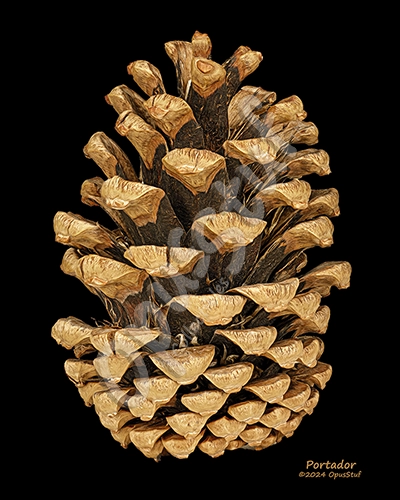
Portador Black
The pine cone in this image was only two inches tall. The photograph was a 6-image focus stack, flattened and silhouetted to allow different backgrounds. A legacy Topaz Labs process was applied to add some character enhancements. The end result is an image that looks like a cross between a photograph and a drawn illustration.

Portador Tan
Portador is Spanish for “carrier,” which is essentially what a pine cone is. It is a storage and distribution device for the host tree, scattering seeds to plant new trees. In its infancy, a pine cone is a small “bloom” on the tree. As the bloom matures, seeds form inside it covered by “scales,” which are trap doors that open to release the seeds when the cone is mature and dried out.
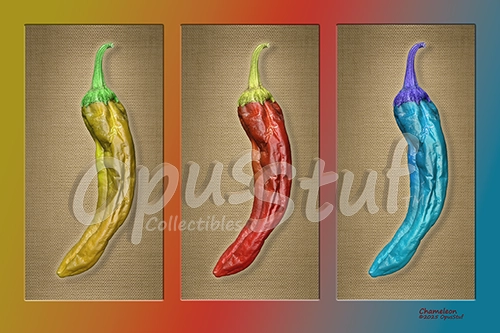
Chameleon
The chameleon of chile peppers? Red, green and yellow are common, but blue? Why not. The idea is to get a little attention and add some color to a wall. Chameleon does not do green, because that’s boring.

Vinca Core Horizontal
An innocent little red Vinca is a small, flat, prolific blooming little plant at home outdoors or in almost any sunny window. If you move in and look closely, there is an interesting, almost scary core inside the center of the bloom.
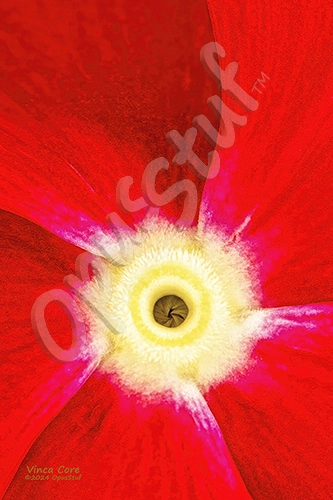
Vinca Core Vertical
An innocent little red Vinca is a small, flat, prolific blooming little plant at home outdoors or in almost any sunny window. If you move in and look closely, there is an interesting, almost scary core inside the center of the bloom. Are those teeth? The fact is that Vincas are a sun loving, nectar provider for bees and hummingbirds, also known by the happy name Periwinkle. This is a bee's eye view.
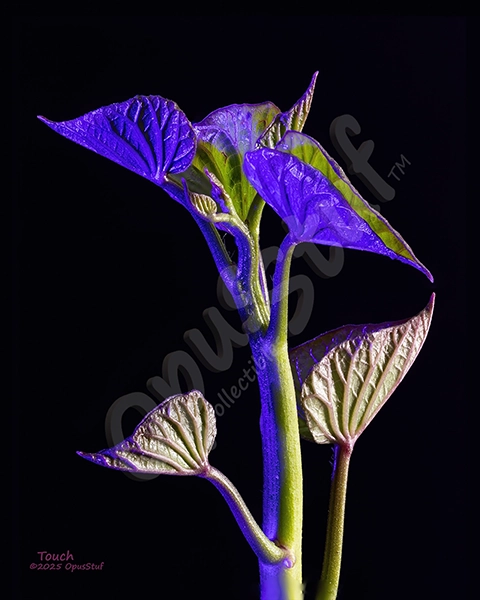
Touch
It's touch, and the myriad of emotions and thoughts it can stimulate. To some, touch is comforting and pleasurable, and to others it can be threatening or uncomfortable. Each of us will have our own individual reaction when touch is imminent.
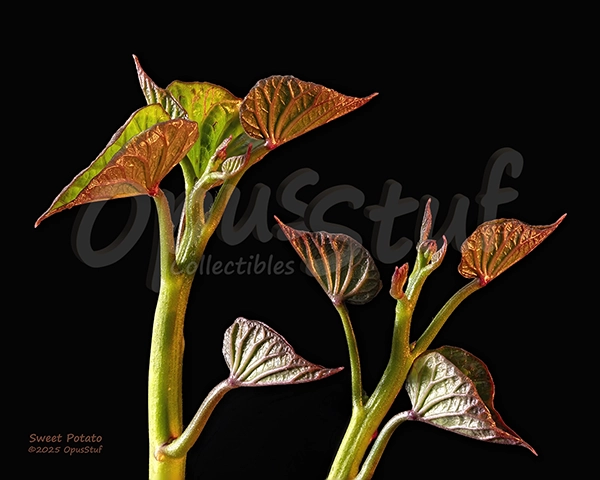
Sweet Potato
Glorious in their tiny world, the sprouts from a sweet potato take on an almost alien appearance. They could perhaps serve as an image of plant life on the planet Venus in a sci-fi movie. The forms that nature gives plant life during their development never cease to amaze.

